During the experimental stages of the Death of a Flower project, I chose as one of my subjects a set of Peruvian Lilies. They were highly colored, had very prominent and interesting stamens, and above all, they were pet friendly, so I could leave them out without worrying about the cat munching on them. However, the decay process with these flowers came in two stages:
- Alive, with flowers intact.
- Dead, with no remaining petals whatsoever.
About the most interesting picture I could have taken was a self-portrait of myself, sweeping up the floor from all the dead petals. So far the best successes I had were with flowers with strong stems, which could hold up the “face” of the flower long enough to get interesting shots before it totally wilted and collapsed. Thus, the decision to go to sunflowers next.
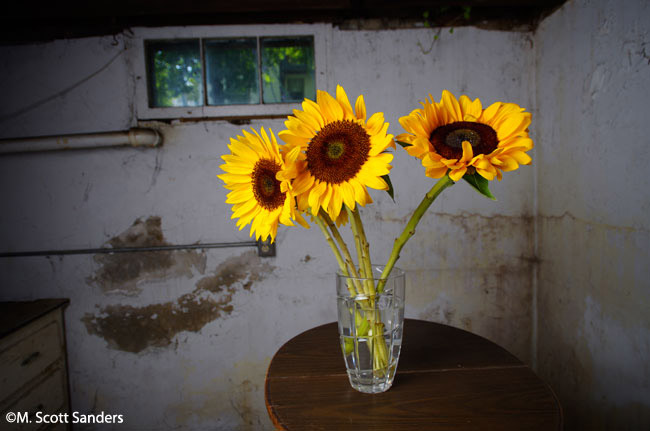
I got five in this group, and each one seemed to have a different personality. One was smaller than the rest, one already had some petals that were bending inward, and another was twisted upright. I was most excited about the upward-facing flower, because once wilting began, this one was most likely to hold its shape.
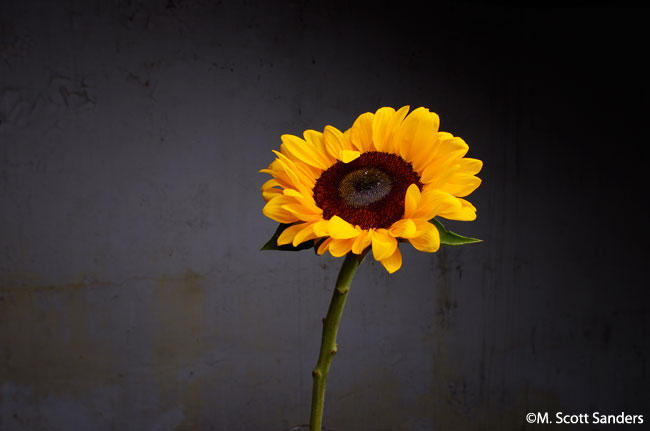
Using the larger sunflowers as a subject allowed me to use my wide-angle Pentax 15mm f/4 lens on individual shots, which was another plus. I love this lens and the way it renders color. For the most part I used it and my 35 f/2.8 macro lens for every single shot.
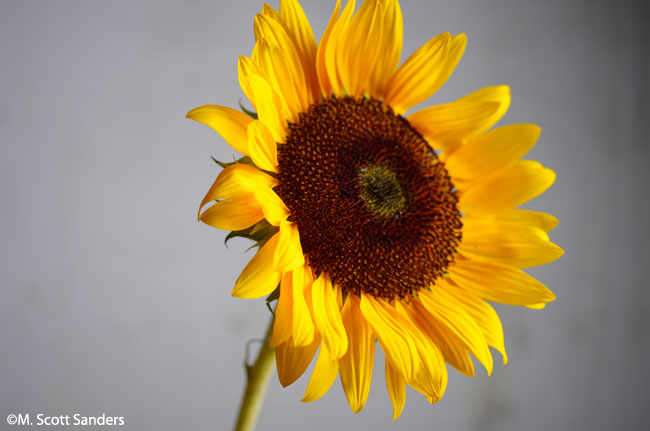
The other good thing about using sunflowers in the summer was being able to keep them safely outside the house, and free of cat-related mishaps. For a week, I greeted the sunflowers on the porch on my way in from work, and everything was good, apart from one thing: on day 5, they looked exactly the way they did on day 1.
Then, on day 7, the smallest flower of the group changed dramatically. I don’t really know how or why this happened, but all of its petals shrank and hardened. The flower remained upright, which was perfect, exactly as I had hoped. The others had wilted slightly, too, but nothing in comparison to the small one. I took them back into the studio that night and got these shots:
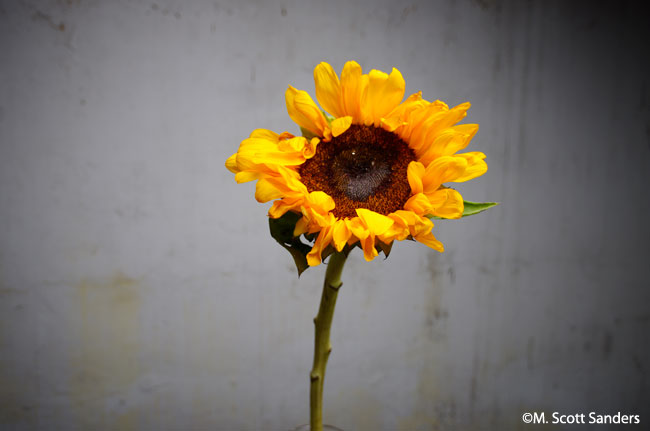
The upright sunflower had its petals curl up a bit, but its “head” remained lifted. The #3 sunflower had drooped forward, a sudden downcast expression.
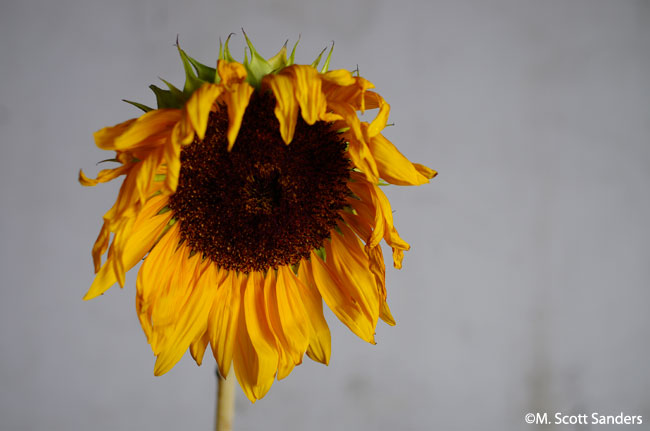
But the highlight of the day was the small one, whose appearance had transformed into that of a wide-open eye:
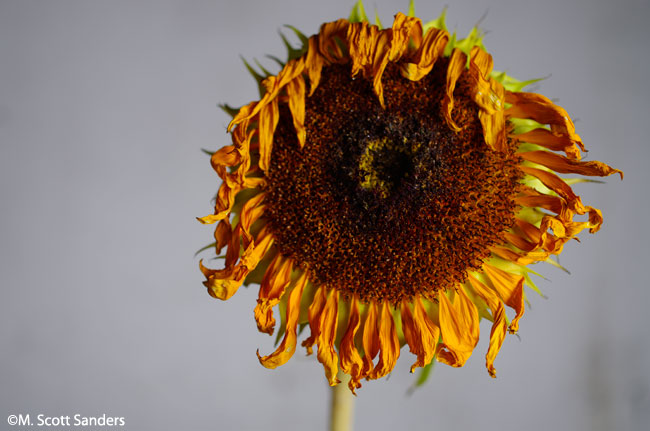
The process of decay moved quickly. In another three days, all of the sunflowers’ petals had shrunk and hardened, and best of all, the strong stems were keeping the flowers anchored in place, with minimal wilting.
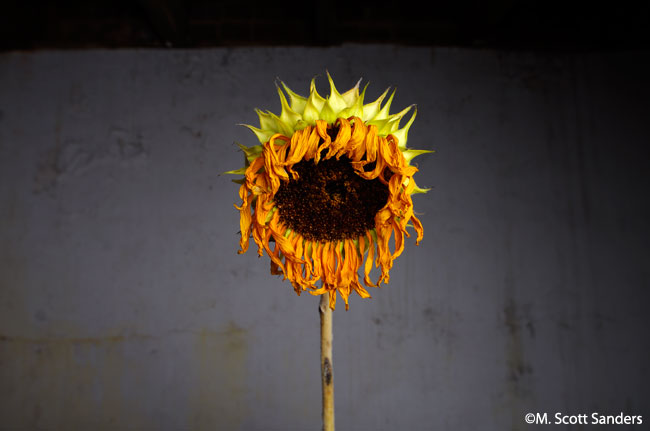
My hope was that I could get some more human expressions from this set of flowers. Sadness is obvious, and most wilted flowers can present that quite easily. The “eye” flower, however, continued to give me a look of surprise. And a touch of the “What Was That” monster that was hiding in the trash compactor from Star Wars.
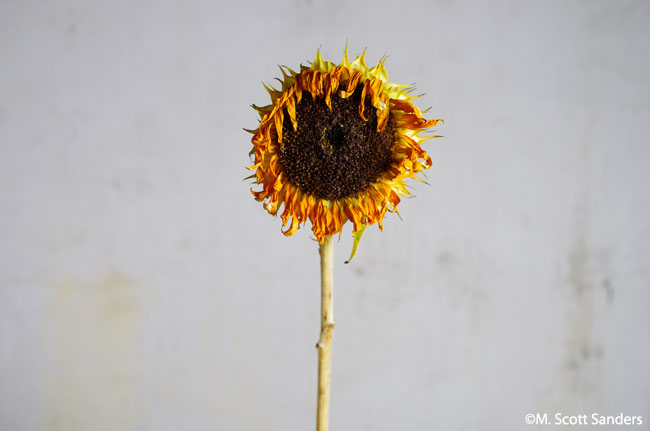
The most interesting shot of that day was of the #2 sunflower. Note the picture of this particular flower at the top of this post, taken from more of a side angle. For this shot, I took the camera off the tripod and shot it slightly from above, freehand, adding more of a tilt than a full-blown shot from the side. Despite the fact that this sunflower, like the others, had its petals dry up, they had done so in an interesting angle. The effect is an expression that is almost carefree, like someone with eyes closed feeling the wind in his or her face.
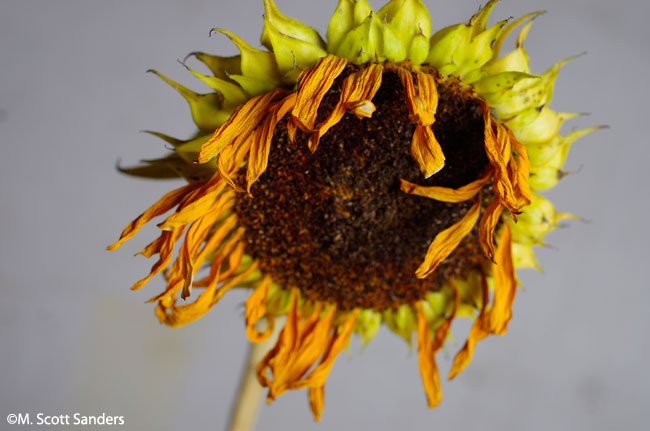
At that point, I was convinced that I couldn’t take a better shot of these. I started in on another project, and these went back on the porch.
I went away for a few days, but rather than keeping the sunflowers on the porch, I left them in the studio. The “studio”, is a room in the basement below the porch, which as you can see from the group shot at the top, is a concrete-walled dungeonette with a tiny window. When I returned, the sunflowers had gone through another transformation, one that I had never expected. They had fully wilted. Any human expression I could get from them was one of dead-down resignation. But something new was added.
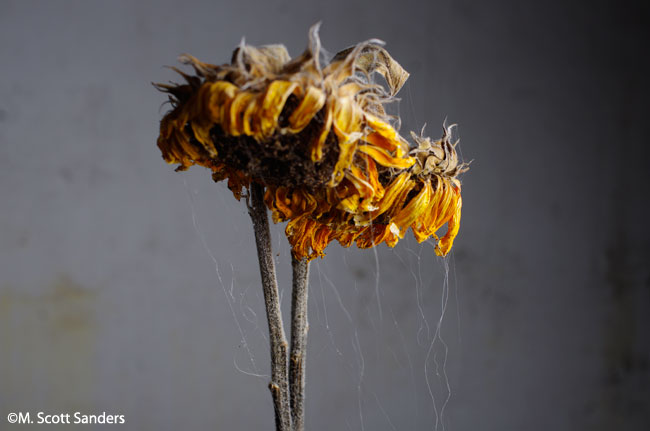
All five of the flowers had been knitted together by cobwebs. I had to pull them apart in order to get individual shots of them. These two remained inseparable, and I didn’t want to extract them for fear of complete disintegration. Yet of all of these, the “eye” remained steadfast and mostly upright.

I’ve tried to repeat this process with other flowers, hoping to get these strands to return, to no avail. It made me wonder if I’m mistaken, and these are not cobwebs. Maybe something from the flowers themselves? I thought about it the whole time I took these shots.
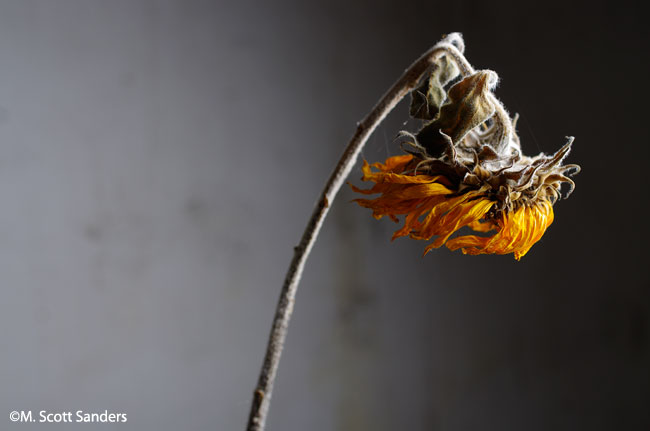
When I had the camera in my hands, I thought of these strands as happy accidents, something random, a product of the sunflowers and time and positioning. As I look these shots over once again, I think of it more as a gift. It is not random, but something to be discovered, and marveled at, and enjoyed. I can’t help but smile when I see this shots, as dismal and creepy as they might first appear, because they are a product of a larger world.
This is part of a series which included as its subjects roses, irises, and hydrangeas.

